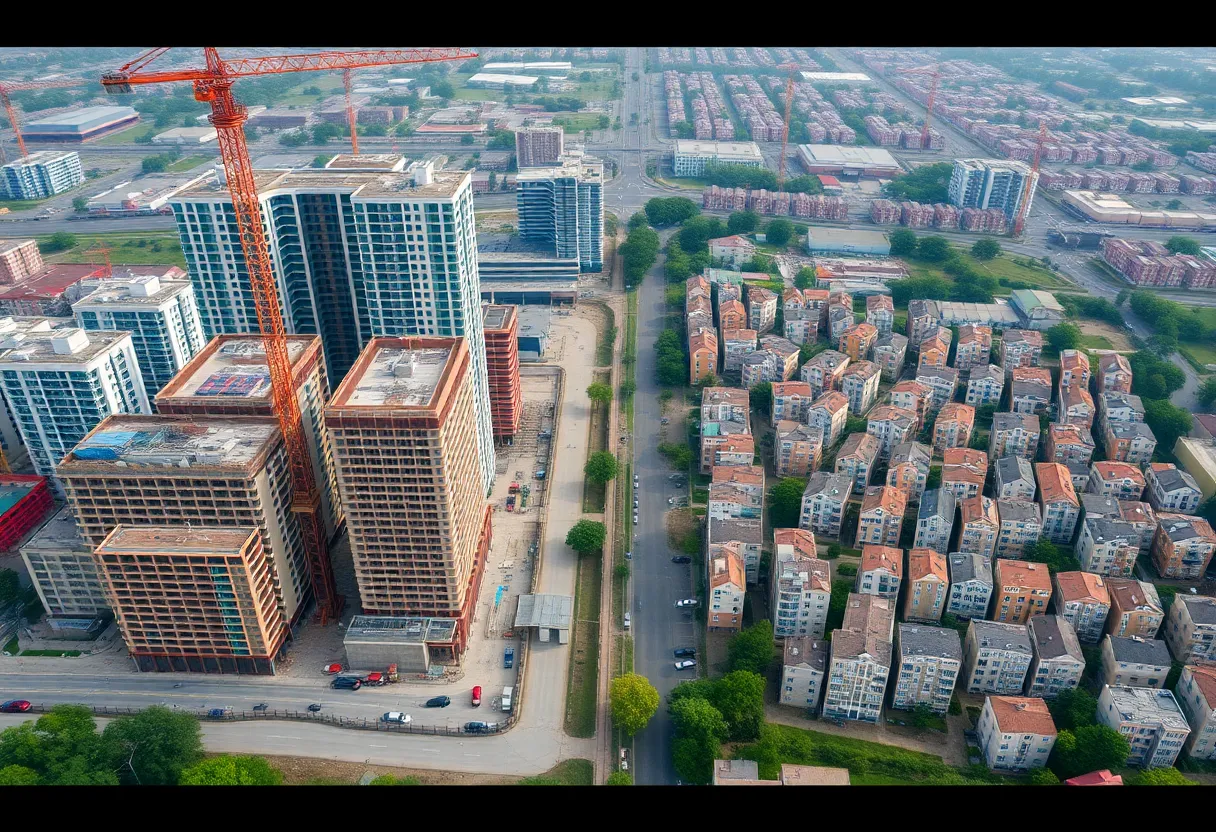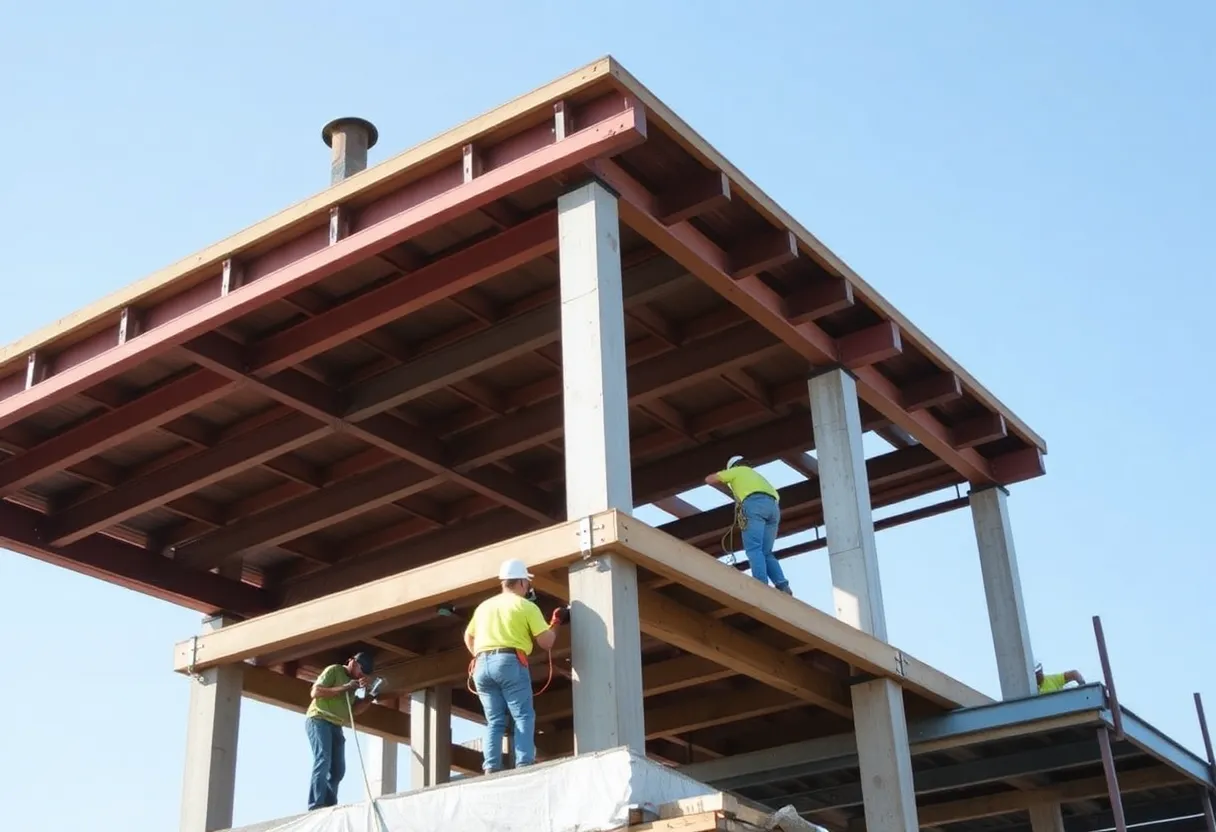News Summary
A new report reveals a division in the U.S. construction industry, with high-end projects, such as luxury housing and data centers, thriving with 12% growth. Conversely, low-income housing and public infrastructure are struggling due to labor shortages and rising material costs, leading to an 18% increase in downtime. Experts call for federal policies to address these disparities and emphasize the importance of skilled workers and apprenticeship programs. The integration of AI is highlighted as a potential solution to improve efficiency and reduce challenges within the sector.
Nationwide Construction Industry Divide Highlighted in New Report
The U.S. construction sector is experiencing a significant split, with high-end projects thriving while lower-end efforts face major challenges, according to a recent analysis. High-end segments, such as luxury housing and data centers, reported a 12% growth, driven by expansions from technology companies. In contrast, low-income housing and public infrastructure are struggling due to labor shortages and increasing material costs, leading to an 18% increase in downtime.
Supporting this divide, companies are adopting innovative strategies to manage risks. For instance, firms are using shared-risk models on nuclear reactor projects, with expectations of opening 10 new sites. Meanwhile, highway construction in states like Wisconsin is progressing but encountering weather-related delays, adding to the industry’s strain.
Experts emphasize the need for federal policies to address these disparities and prevent potential layoffs. The sector’s heavy reliance on skilled workers highlights the importance of expanding apprenticeship programs to build a more stable workforce. Additionally, the integration of artificial intelligence in planning and execution is emerging as a key innovation to improve efficiency across projects.
Background on the Industry Challenges
This analysis stems from a review of the U.S. construction economy, focusing on the contrasting performance between project types. High-end growth is fueled by demand in technology and luxury sectors, allowing for continued investment despite broader economic pressures. On the other hand, the struggles in low-income housing and public infrastructure are exacerbated by ongoing issues like rising material prices and a lack of available labor.
The use of shared-risk models by companies like Bechtel for nuclear projects represents a proactive approach to managing uncertainties, potentially paving the way for more resilient development strategies. In Wisconsin, highway projects are a specific example of state-level efforts that are impacted by external factors such as weather, which can delay timelines and increase costs nationwide.
Federal involvement is seen as crucial to balancing these issues, with calls for policies that support workforce development through apprenticeships. The adoption of AI tools is gaining traction as a solution to optimize processes, reducing downtime and enhancing overall project outcomes in the construction field.
This report, based on data from October 11, 2025, underscores the need for strategic adaptations in the industry to maintain stability and growth across all sectors.
To provide more context, the 12% growth in high-end projects reflects a broader trend where tech-driven demands, such as for data centers, are outpacing other areas. This growth helps offset the 18% increase in downtime seen in more vulnerable segments, where labor shortages mean that projects often stall due to insufficient skilled workers. For nuclear endeavors, the plan for 10 new sites under shared-risk frameworks aims to distribute financial burdens more evenly, potentially encouraging more investments.
In Wisconsin, ongoing highway constructions exemplify how regional factors like weather can amplify national trends, leading to delays that affect budgets and timelines. Overall, the industry’s push for AI integration seeks to streamline operations, from initial planning to on-site execution, offering a pathway to mitigate some of these challenges. By focusing on these elements, the construction sector can work toward a more balanced future.
The analysis also points to the role of federal policies in bridging the gap, suggesting that without intervention, the strain on lower-end projects could lead to widespread economic impacts. Apprenticeship programs are highlighted as a vital tool for developing the skilled workforce needed to support all types of construction activities. This comprehensive view reveals an industry at a crossroads, with innovation and policy changes key to resolving the current divide.
FAQ Section
- Q1: What is the growth rate for high-end construction projects? A1: High-end projects, including luxury housing and data centers, thrive with 12% growth, fueled by tech giants’ expansions.
- Q2: What challenges are affecting low-income housing and public infrastructure? A2: Low-income housing and public infrastructure suffer from labor shortages and rising material costs, with downtime increasing by 18%.
- Q3: How many new nuclear reactor sites are expected? A3: Companies like Bechtel are leveraging shared-risk models for nuclear reactor projects, expecting 10 new sites.
- Q4: What issues are highway constructions in Wisconsin facing? A4: Highway constructions in states like Wisconsin report progress but face weather-related delays.
- Q5: What do experts say about federal policies? A5: Experts argue that federal policies must bridge this gap to prevent widespread layoffs.
- Q6: Why is the industry focusing on skilled workers? A6: The industry’s reliance on skilled workers underscores the need for apprenticeship programs.
- Q7: What innovation is emerging in the industry? A7: Amidst these challenges, AI integration in planning and execution is emerging as a key innovation.
Key Features Chart
| Feature | Description | Key Statistic |
|---|---|---|
| High-End Project Growth | Growth in luxury housing and data centers | 12% growth |
| Downtime Increase | Challenges in low-income housing and infrastructure | 18% increase |
| Nuclear Sites Expected | Use of shared-risk models | 10 new sites |
| Wisconsin Highway Issues | Progress with delays | Weather-related delays |
| Federal Policy Need | To bridge industry gaps | Prevent widespread layoffs |
| Workforce Focus | Reliance on skilled workers | Need for apprenticeship programs |
| Emerging Innovation | AI in planning and execution | Key innovation |
Deeper Dive: News & Info About This Topic
Construction FL Resources
PulteGroup Breaks Ground on New Residential Development in Atlanta
PALFINGER Opens New Parts Distribution Center in Texas
Nationwide Construction Spending Experiences Significant Decline
Chantilly Premier breaks ground as region expands data center power and services
Webinar on CPVC Advantages for Data Centers
AMG Building Launches Mobile App for Remote Construction Oversight
ConCntric raises $10 million Series A to expand agentic AI and scale preconstruction platform
WWII-Era Explosive Safely Removed from Long Beach Port
Tampa Approves Smart City District Development
Mortgage Rates Dip, Yet Home Buyers Remain Cautious
Author: Construction FL News
The FLORIDA STAFF WRITER represents the experienced team at constructionflnews.com, your go-to source for actionable local news and information in Florida and beyond. Specializing in "news you can use," we cover essential topics like product reviews for personal and business needs, local business directories, politics, real estate trends, neighborhood insights, and state news affecting the area—with deep expertise drawn from years of dedicated reporting and strong community input, including local press releases and business updates. We deliver top reporting on high-value events such as the Florida Build Expo, major infrastructure projects, and advancements in construction technology showcases. Our coverage extends to key organizations like the Associated Builders and Contractors of Florida and the Florida Home Builders Association, plus leading businesses in construction and legal services that power the local economy such as CMiC Global and Shutts & Bowen LLP. As part of the broader network, including constructioncanews.com, constructionnynews.com, and constructiontxnews.com, we provide comprehensive, credible insights into the dynamic construction landscape across multiple states.





